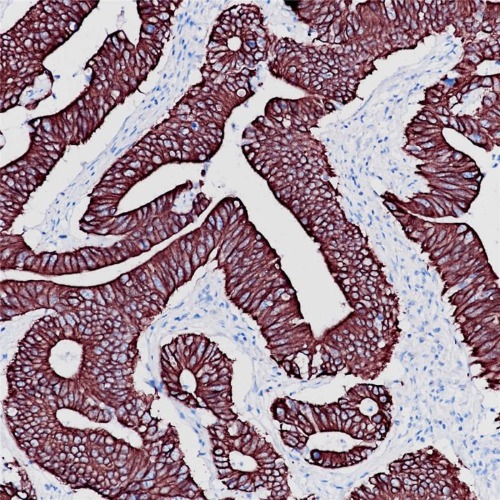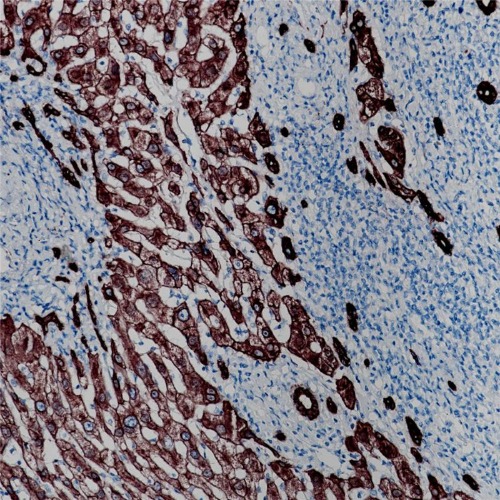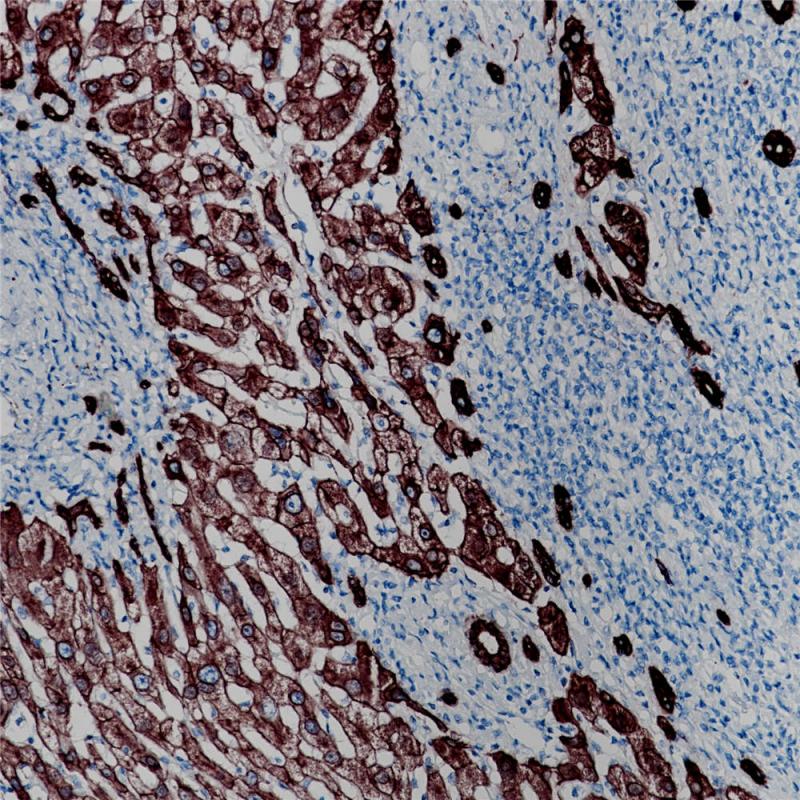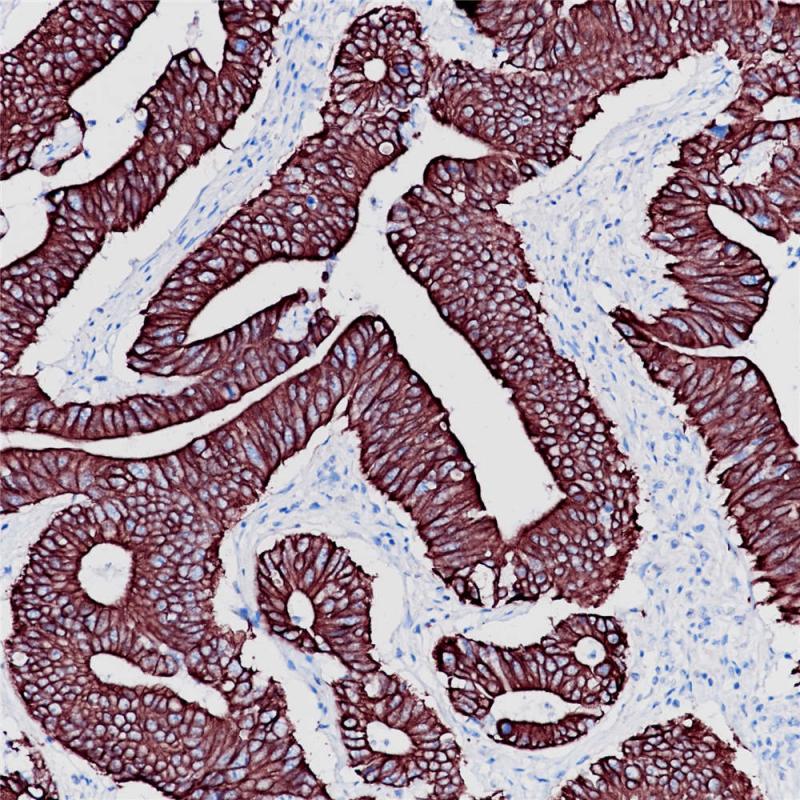Cytokeratin 18 Rabbit Monoclonal Antibody(ARB856)
CAT.NO. : ARB6646
RMB Please choose
RMB Please choose
Size:
Trail, Bulk size or Custom requests Please contact us
*产品价格可能会有所调整,请以品牌方官网实时更新的价格为准,以确保准确性。
Background
Cytokeratin 18 (also named keratin 18) is a type I cytokeratin. It is, together with its filament partner keratin 8, perhaps the most commonly found products of the intermediate filament gene family.
In some epithelial cell types, keratin 8 and keratin 18 are the sole keratins present. The classical example is the liver, with keratin 8/keratin 18 representing the characteristic and only keratin pair of normal hepatocytes. The same is true for other highly specialized parenchymatous epithelia such as acinar cells of the pancreas, proximal tubular epithelial cells of the kidney, and certain endocrine cells such as pancreatic islet cells. Furthermore, keratin 8/keratin 18 occur together with other keratins—in various pseudostratified (e.g. respiratory) and complex (e.g. glandular) epithelia and in the urothelium; in these composite epithelial tissues, keratin 8 and keratin18 are often most prominent in the lumen-lining cells. Even in non-keratinizing stratified squamous epithelia, keratin 8 and keratin 18 may be focally expressed in the basal cell layer, together with keratin 19 and the constitutive stratified-epithelial keratins.
In regard to malignant tumors, keratin 8 and keratin 18 are expressed in most carcinomas except for some differentiated squamous cell carcinomas. Therefore, keratin 8 and keratin 18 antibody strongly stain most adenocarcinomas, hepatocellular carcinomas, renal cell carcinomas, and neuroendocrine carcinomas.
In some epithelial cell types, keratin 8 and keratin 18 are the sole keratins present. The classical example is the liver, with keratin 8/keratin 18 representing the characteristic and only keratin pair of normal hepatocytes. The same is true for other highly specialized parenchymatous epithelia such as acinar cells of the pancreas, proximal tubular epithelial cells of the kidney, and certain endocrine cells such as pancreatic islet cells. Furthermore, keratin 8/keratin 18 occur together with other keratins—in various pseudostratified (e.g. respiratory) and complex (e.g. glandular) epithelia and in the urothelium; in these composite epithelial tissues, keratin 8 and keratin18 are often most prominent in the lumen-lining cells. Even in non-keratinizing stratified squamous epithelia, keratin 8 and keratin 18 may be focally expressed in the basal cell layer, together with keratin 19 and the constitutive stratified-epithelial keratins.
In regard to malignant tumors, keratin 8 and keratin 18 are expressed in most carcinomas except for some differentiated squamous cell carcinomas. Therefore, keratin 8 and keratin 18 antibody strongly stain most adenocarcinomas, hepatocellular carcinomas, renal cell carcinomas, and neuroendocrine carcinomas.
Overview
| Target | Cytokeratin 18 |
| Host Species | rabbit monoclonal antibody |
| Molecular Weight | 48 kDa |
| Purity | ProA affinity purified IgG |
| Species Cross-reactivity | Human |
| Form | Liquid |
| Applications | IHC-P |
| Swissprot ID | P05783 |
| Immunogen | Synthetic peptide corresponding to cytokeratin 18 residues within aa330-430 |
| Storage Buffer | PBS 59%, Sodium azide 0.01%, Glycerol 40%, BSA 0.05% |
| Storage Conditions | -25°C to -18°C |
| Dilutions | IHC-P: 1:100-1:200 |
| Subcellular Location | Cytoplasm |
| Recommended Method | Heat induced epitope retrieval with Tris-EDTA buffer (pH 9.0), primary antibody incubate at RT (18°C-25°C) for 30 minutes |
Data

Immunohistochemical staining of human colon adenocarcinoma tissue sections using Cytokeratin 18 Rabbit Monoclonal Antibody (ARB856).

Immunohistochemical staining of human liver tissue sections using Cytokeratin 18 Rabbit Monoclonal Antibody (ARB856).
Storage
Store at 4°C short term. For long term storage, store at -20°C, avoiding freeze/thaw cycles.
Research Use Only
For Research Use Only. Not for use in diagnostic procedures.
 New Products
New Products





















